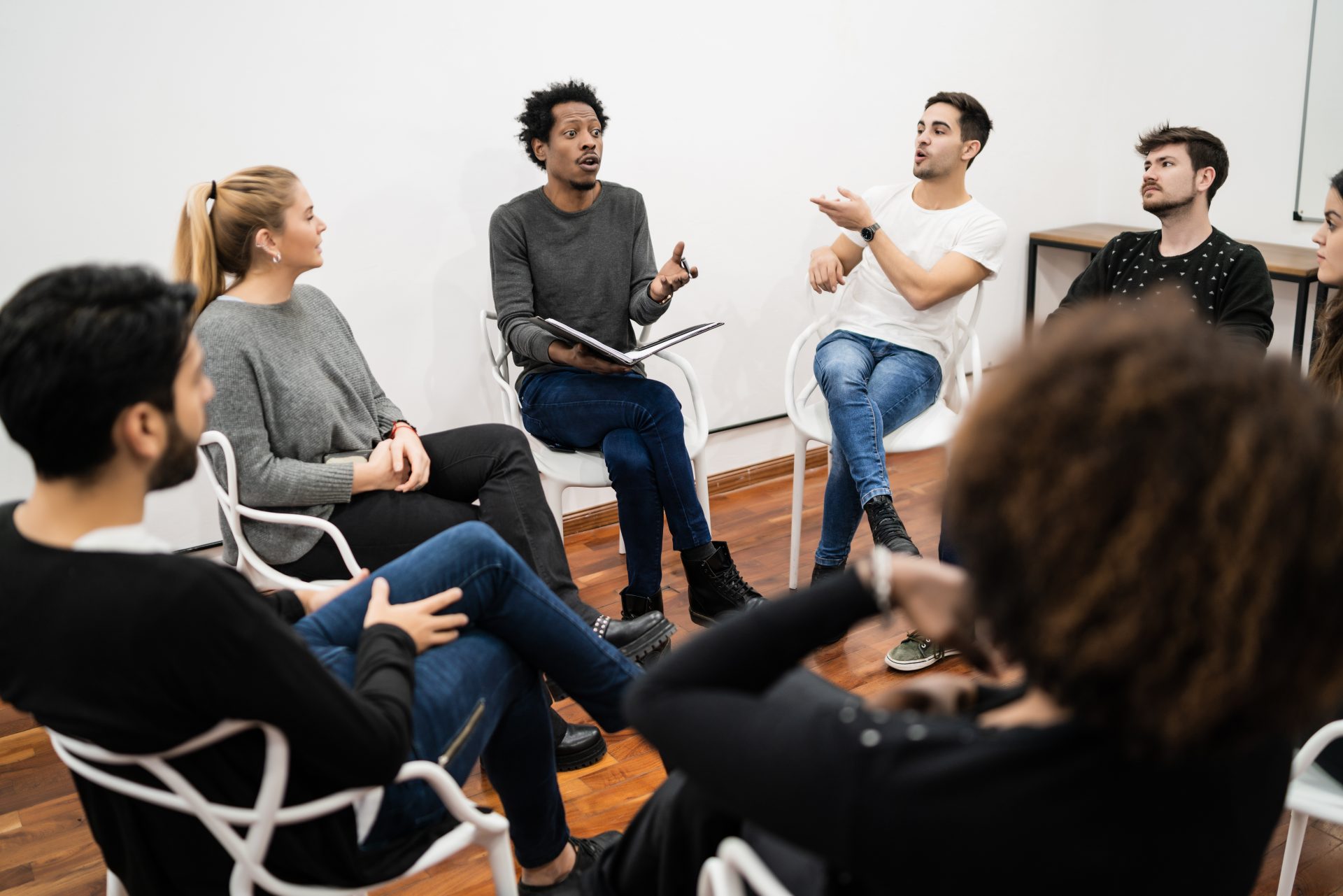Before we organize any neighborhood event, we need to know all about circles! The circle is the most basic restorative practice and will form the basic structure for every neighborhood gathering. Here we explain why this is so important and how to facilitate a proper circle conversation.
Circles essentially serve as a safe place for all participants to express themselves in a constructive and respectful way in order to better understand each other. By focusing on connection and open communication, we lay the foundation for a dynamic, stimulating, and fair community where everyone feels good. Referring to the prevention pyramid (see part 1, chapter 5), we can make a distinction between proactive (levels 1 and 2 of the prevention pyramid) and responsive circles (levels 3 and 4). Proactive circles aim to:
- improve the general living environment (level 1) by getting to know each other better
- develop a stronger sense of community
- discuss and address a specific task (level 2), e.g. organizing a New Year event for the neighborhood or establishing neighborhood principles
Responsive circles focus on a particular problem (e.g. cleanliness) or conflict and can be either specifically preventive (level 3, see also tool#8) or curative (level 4, see also tool#9 and #10) in nature.
- All circles, whether it is an introductory circle or a restorative conference (tool#10), all follow more or less the same basic principles:
Participants sit in a circle (preferably no tables). The circle symbolizes equality and unity. In a circle everyone can make eye contact with all other participants. - Circles are led by a facilitator who introduces the conversation topic, sets a tone, introduces and monitors some basic conversation rules, and makes sure everyone gets to speak.
- Everyone gets an equal say. Everyone has the right to feel heard and to participate in decision-making on matters that concern them. Circles help prevent one person from dominating the conversation. Participants are asked to be concise. Otherwise, it quickly gets boring for others.
- Participants are asked explicitly not to interrupt each other. This is important to keep the conversation safe and equal. One cannot speak freely when they fear that someone will interrupt them or that they will have to defend their opinion.
- Thank participants for their contributions. This appreciative attitude acknowledges the fact that participants are exposing themselves and encourages active participation from everyone present.
These guidelines are designed to enable an authentic exchange. They are simple but require discipline to be consistently applied.
The role of the facilitator is crucial for the success of a circle conversation. They outline the why and how of the gathering. They set clear expectations and communicate that they expect cooperation and respect for everyone. Although the facilitator is not responsible for what is being said, they are responsible for:
- ensuring a safe process,
- guiding the conversation with the aim of fostering connection between group members and
- monitoring the rules.
Some facilitators use a ‘talking piece’ or talking stick to structure the circle they run. A talking piece allows us to talk in peace. The idea is that only the person holding the talking piece may speak – except for the facilitator who may ask a clarifying question, make a comment or interrupt. The use of a talking piece emphasizes that the person speaking deserves the full attention of the group






